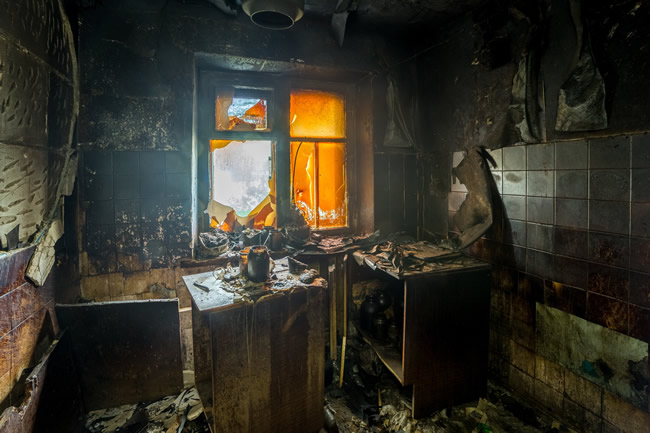Smoke Damage Restoration
- Soot and Residue Cleaning: Removing soot and smoke residues from surfaces, including walls, ceilings, and personal belongings.
- Air Duct Cleaning: Cleaning HVAC systems to remove smoke particles and improve air quality.
- Deodorization: Utilizing advanced techniques to neutralize smoke odors and restore a fresh indoor environment.
- Textile and Fabric Cleaning: Specialized cleaning of clothing, upholstery, and other fabrics affected by smoke.
How Does the Restoration Process Work?
The restoration and remediation process is designed to repair and restore homes or businesses after they’ve been damaged by events like water, fire, mold, or other disasters. Here’s a general overview of how this process typically works:
1. Emergency Contact
The process begins with an emergency contact to a restoration and remediation company. This is a critical step where the issue is reported, and the urgency of the situation is assessed.
2. Inspection and Damage Assessment
A team of professionals then conducts a thorough inspection of the property to assess the extent of the damage. This involves identifying the source of the problem, determining the areas affected, and planning the necessary steps for remediation and restoration.
3. Water Removal (if applicable)
In cases of water damage, the immediate priority is to remove any standing water using pumps and vacuums. This step is crucial to prevent further damage and the growth of mold.
4. Drying and Dehumidification
Once the water is removed, drying and dehumidifying the affected areas begin. This involves using air movers and dehumidifiers to ensure all moisture is thoroughly extracted from building materials and belongings.
5. Cleaning and Sanitizing
All affected areas and items need to be cleaned, sanitized, and deodorized. This includes carpets, clothing, and other fabric items. Specialized cleaning techniques are used, and antimicrobial treatments are applied to prevent mold and bacteria growth.
6. Mold Remediation (if necessary)
If mold is present, mold remediation will take place. This involves containing the mold, filtering the air, removing mold-infested materials, and cleaning and sanitizing the area thoroughly.
7. Restoration
The final step is the restoration process, which may involve minor repairs like replacing drywall and installing new carpet, or it may entail major repairs such as the reconstruction of various areas or rooms in a home or business. This step is aimed at bringing the property back to its pre-damage condition.
8. Final Walk-Through
Once the restoration is complete, a final walk-through is conducted with the property owner to ensure satisfaction with the work and that all aspects of the remediation and restoration have been addressed.
Throughout this process, communication with the property owner is key to ensure they are informed and reassured. Restoration and remediation professionals work diligently to minimize disruption and return the affected environment back to normal as safely and swiftly as possible.
If you’re facing damage that requires professional remediation and restoration, don’t hesitate to call us. Our experienced team is ready to assist you immediately, ensuring a smooth and effective restoration process. We also specialize in working directly with your insurance company to facilitate claims and reduce the hassle for you. Contact us today to get the help you need and to start the restoration process with confidence.

